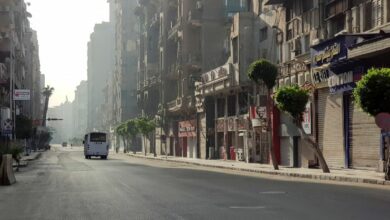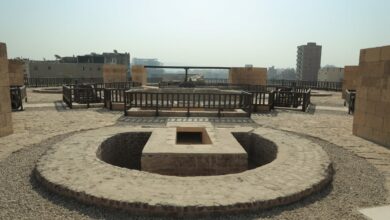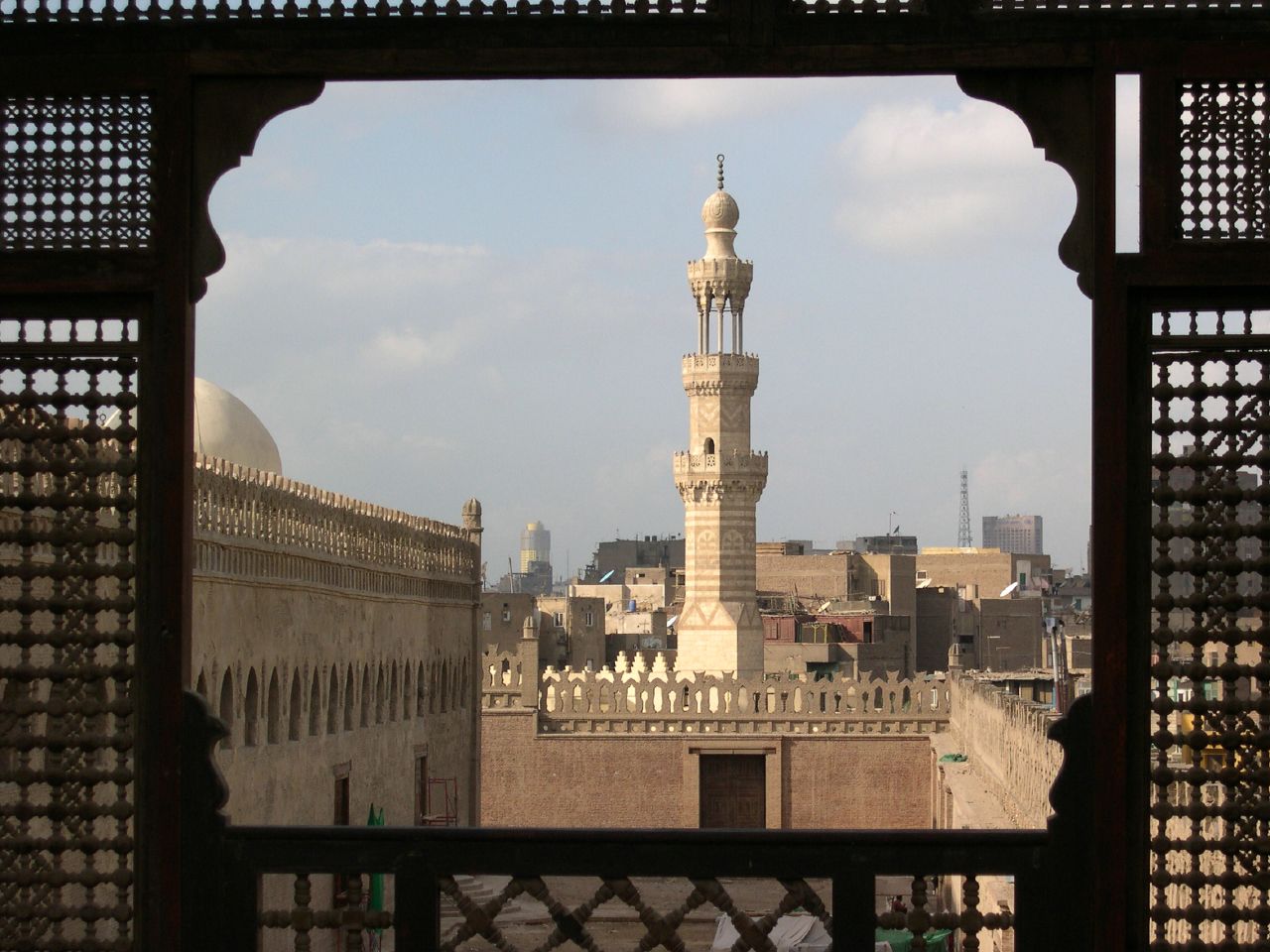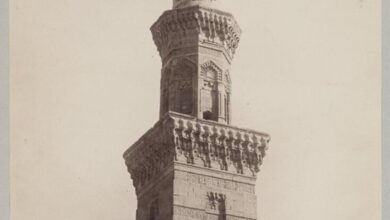Cars fly through a street called Al Mantiqa al Sinaaeya (Th Industrial Zone) as though the surrounding decay might catch up with them. For a length of about 150m, a continuous mound of demolition debris, blocks of broken stone and organic household waste, up to three meters high, fill the road, leaving a gap wide enough for cars to pass.
At times the mound simmers, at others it erupts in a blaze. The other day a new item was added: a bloated carcass of a dead horse, a banquet for the lone stray dog that braved being run over to feast off it.
It seems that anywhere you throw a stick in this country of ours, you are bound to find something historic lurking underneath the earth it lands upon.
In this case a very rare 1100 year old aqueduct lies mostly buried and bruised under the aforementioned mound.
Bringing water from a spring to the new settlement of Qataai in the 9th century, the Ibn Tulun Aqueduct is one of possibly three structures to have survived from theTulunid era, the other two being the famous mosque of his namesake and an obscure hamam near the Maddabegh, escaping the vengeful Abassid’s rage and then centuries of urban development, only to end up in this inglorious state.
Basateen, literally orchards, is home to our ill-fated aqueduct, where today it represents the backwaters of Cairo.
Originally on the outskirts of the city and dominated by cemeteries, it lies bypassed by a mushrooming network of highways and fly-overs, out of sight and mind of millions of Cairenes. Most of our sprawling city’s aesthetically challenged utilities have ended up there over the last few decades.
In a radius of one kilometre exist factories that produce things as diverse as plastics, marble and baby food, an infamous slaughterhouse, a public bus garage, the Ministry of Interior’s Mounted Police Unit and street-markets for a range of building material. Not to mention the dense self-built communities of Basateen, Arab el Maadi, Ezbet Khairallah and Ezbet elNasr.
Adding "local landfill’ "o the list does not seem an exaggeration.
So whose problem is it one asks? As a no-man’s land, devoid of any real community, except possibly the dead, no one seems to care about it. And so it is much cheaper for the local industry and households to get rid of their refuse by dumping it there instead of a designated landfill in New Cairo.
There is evidence the local council clears part of the waste every now and then in the parallel Al Khayala street, though within a few days it’s back to square one.
Of course removing the garbage is only addressing the symptom.
One routine knee-jerk reaction by the local government to this bio-hazard and heritage calamity would be to fence the monument off and call it a designated heritage area, and that would be the end of it, garbage, aqueduct and all.
Another reaction would be a participatory planning initiative. It would endow the place with a sense of importance and the surrounding local community would be drawn in to patron it and maybe make a living out of it to boot.
Let us imagine the aqueduct, part of the surrounding cemeteries and the nearby Saba’a Banat mausolea, forming a strong heritage magnet.
Revolving around this magnet it is possible that a local community-based tour-guiding activity catering to local and foreign tourists can be created. Community planning networks for example along with the local government can initiate training workshops and encourage the setting up of local NGOs that manage the various aspects of tour guiding, awareness and commerce.
Amenities such as parks and youth centers can be planned into the large disused industrial plots to serve the surrounding neighbourhoods that have a chronic lack of such services.
The Basateen Industrial Zone needs to be upgraded and de-polluted, since relocating it will put hundreds of people out of jobs. Minor land parcels can be put up for investment in retail and leisure activities with a local heritage tax that funds the maintainance of local monuments, thus bypassing the need to have any form of ticketing as it is unreasonable to fence off the heritage area.
Informal local businesses such as the partly defunct Souk Goma’a and some of the small sized industry such as carpenters and stone carvers should be encouraged and incorporated in to the plan since they support hundreds of local families and provide an important service, as well as a curiosity to be explored.
Eventually the area can link up with the National Museum of Egyptian Civilisation and the entire area of Masr al Qadima and Al Fustat as an extension of the historic heart of Cairo, for which there has been a heritage plan for some time.
In the end our environmental, urban and heritage preservation issues can only be sustainably solved and turned into opportunities by engaging the local community rather than turning backs on them.
This article is part of Al-Masry Al Youm's weekly "Environmental Voices" series, in which issues related to the environment–whether local, regional or international in nature–will be discussed from the point of view of environmental experts.




